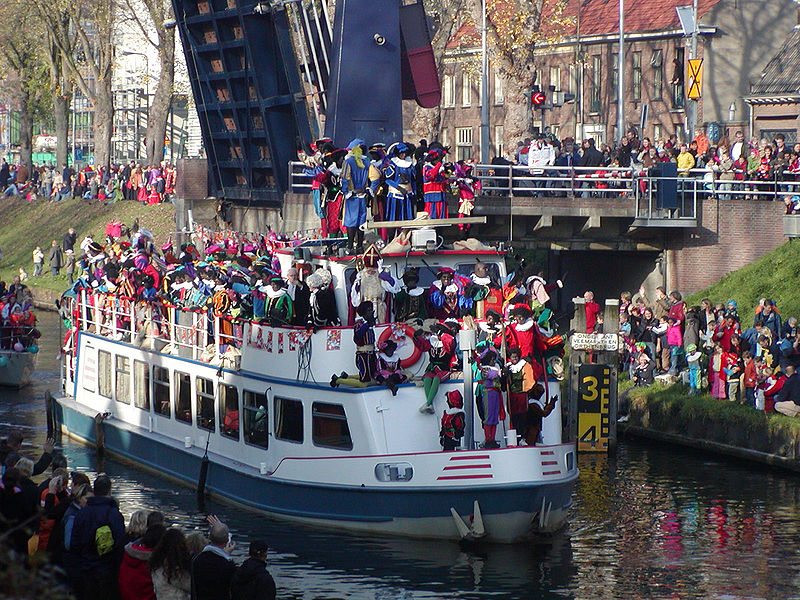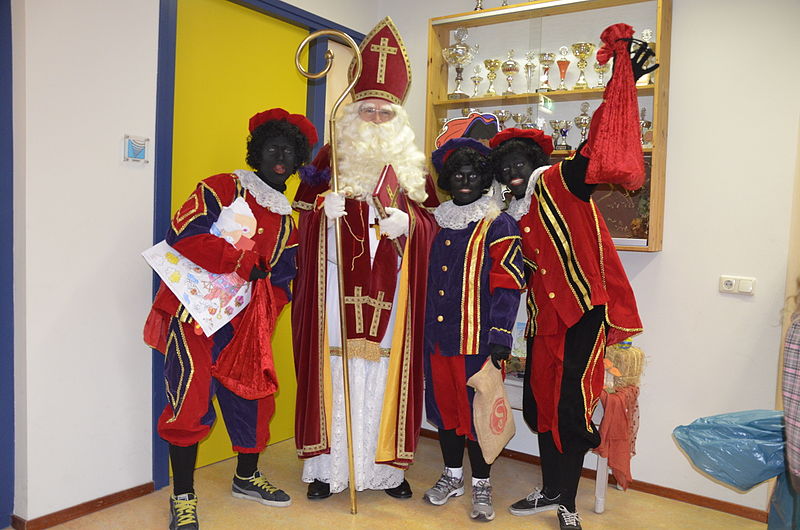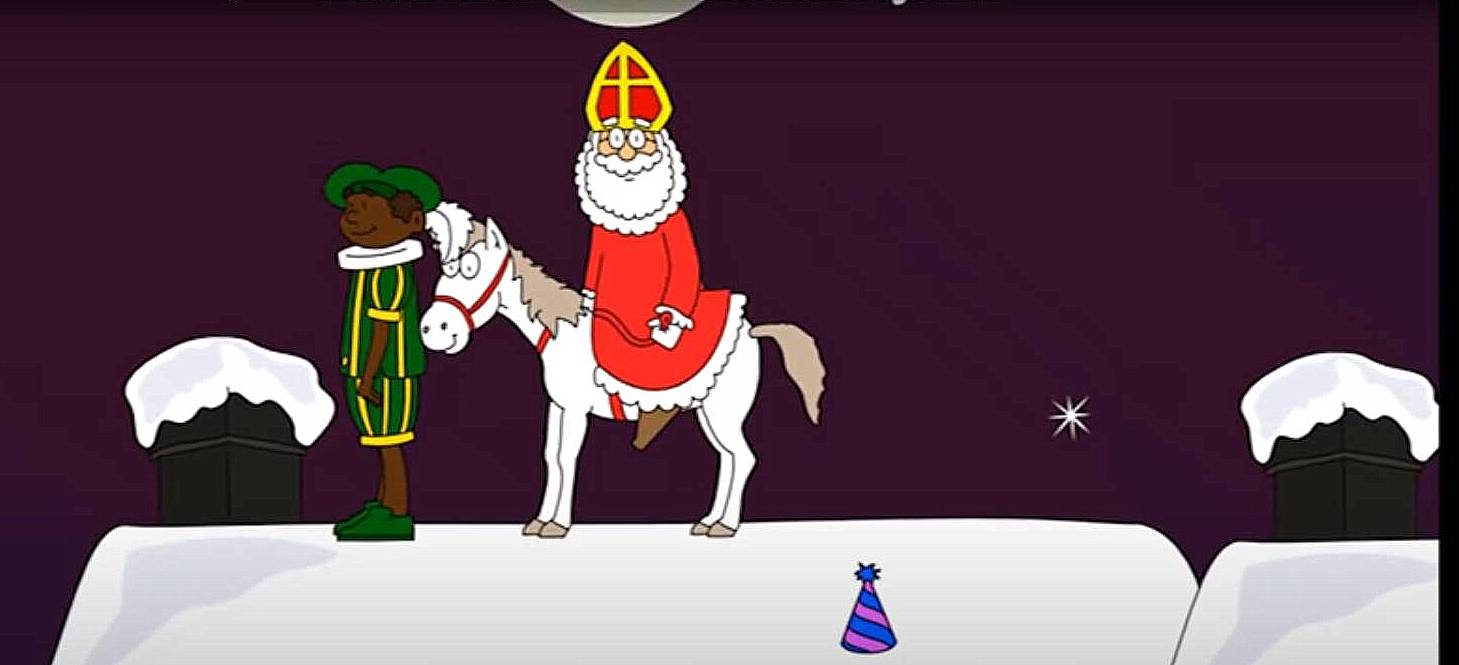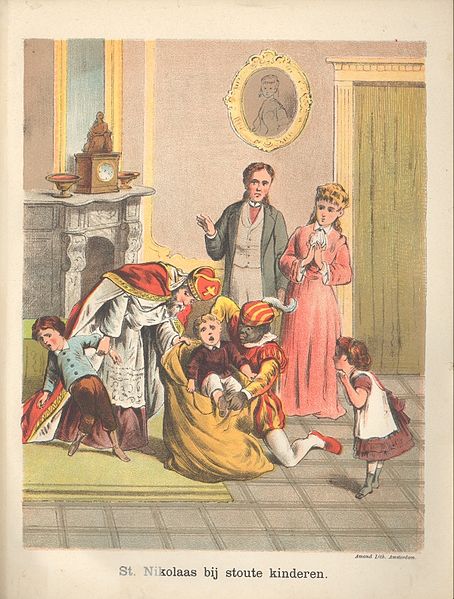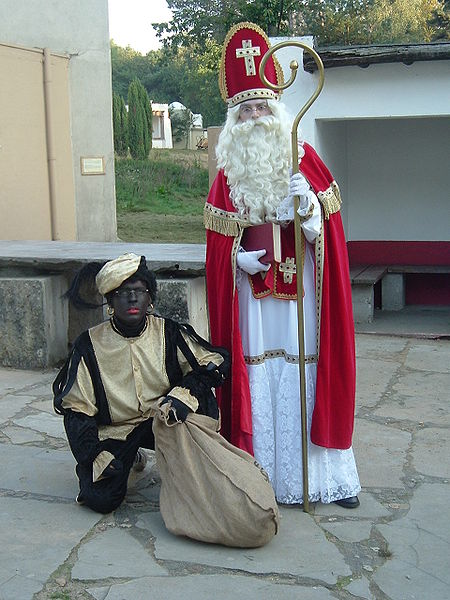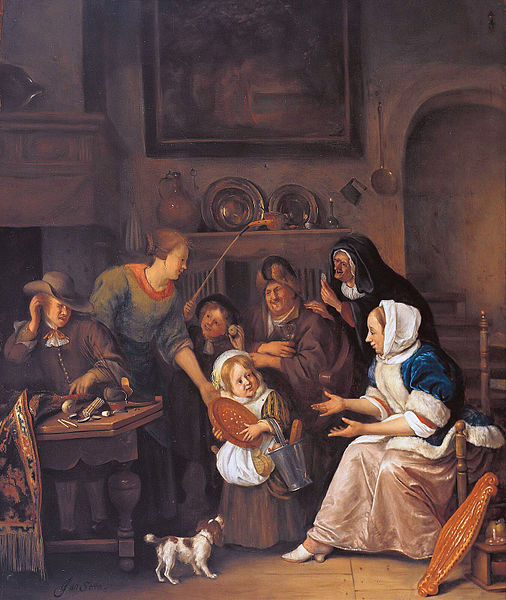Santa Claus travels around the world, but in the Netherlands he does it in an extremely original way. He comes there not in a sleigh pulled by reindeers, but – not surprising for a country of sailors! – arrives on a boat. And he’s not alone, but with a large group of helpers!
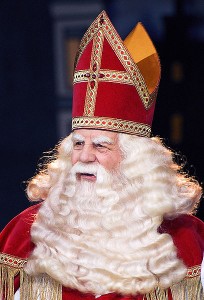 The Dutch Santa Claus, known there as “Sinterklaas”, is a real Santa Claus, dressed in the robes of a bishop. Residents of the Netherlands happily did not succumb to the influence of America and kept the tradition in what is the most beautiful magic. In the Netherlands it is a wonderful celebration, still vividly relating to the history of this country. Dutch people perfectly mixed what is used in the whole Christian world (the figure of St. Nicholas) with their own traditions.
The Dutch Santa Claus, known there as “Sinterklaas”, is a real Santa Claus, dressed in the robes of a bishop. Residents of the Netherlands happily did not succumb to the influence of America and kept the tradition in what is the most beautiful magic. In the Netherlands it is a wonderful celebration, still vividly relating to the history of this country. Dutch people perfectly mixed what is used in the whole Christian world (the figure of St. Nicholas) with their own traditions.
Celebrations
Santa Claus stays in the Netherlands from the first Saturday after St. Martin’s day (November 11) up to December 6. He comes from Spain on the steamer, surrounded by colorfully dressed figures with black faces, so-called Black Peters (Zwarte Pieten). Also accompanied by a white horse named Schimmel.
Sinterklaas is greeted with great solemnity, and the children sing the song “Zie ginds komt de stoomboot” (“There arrives the steamboat”).
Then the exotic guest visits every town and village, and its route (on the water or riding on a white horse) is besieged by children who are very excited with waiting for his verdict – did they beha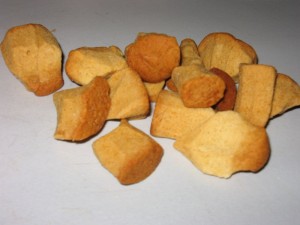 ve well or not? Sinterklaas has in fact, written in the great book, the names of those who were rude. Unruly kids do not get gifts, but usually Nicholas solemnly announces that the city or village does not have this year anyone like that. At that moment the kids calm theirselves and enjoy special cakes called pepernoten. Although not yet! There is still a moment of uncertainty as it turns out that the gifts were lost in the travel as a result of a storm. But to their joy a Black Peter appears with a bag of candy and sweets which are saved and served to the children.
ve well or not? Sinterklaas has in fact, written in the great book, the names of those who were rude. Unruly kids do not get gifts, but usually Nicholas solemnly announces that the city or village does not have this year anyone like that. At that moment the kids calm theirselves and enjoy special cakes called pepernoten. Although not yet! There is still a moment of uncertainty as it turns out that the gifts were lost in the travel as a result of a storm. But to their joy a Black Peter appears with a bag of candy and sweets which are saved and served to the children.
Now Sinterklaas can go to a meeting with the mayor. His stay is often reported by the local television, and he becomes a real TV star as is often interviewed. In the evening children put their boots to the chimneys with a carrot or a sugar cube for Schimmel inside. May Sinterklaas arrive to their home to leave there a gift? (Usually it is Black Peter’s job as he slips through the chimney for it). And the kids are not disappointed… Up to December 5th Santa Claus is riding a tour to all villages and standing on the roof, secretly listens to songs sung by children by the chimney, to find out what their wishes are.
Note: the Dutch kids know a lot of songs dedicated to Sinterklaas, and CD’s with “Sinterklaas” songs are available. Very popular is the song for December 5th.
Appropriate gifts are delivered on December 5th, in the “evening of gifts” (pakjesavond or Sinterklaasavond). Santa Claus hands them personally or tosses them on the threshold of the house. As all gifts come directly from him, they are not signed! Dutch people care much about their originality and always attach some funny poems. For adults an imaginative packaging is more important than the gift. That night children drink hot chocolate while their parents and other adults taste “Bishops wine” (a mulled wine). The next day Nicholas is already out of the Netherlands… He has sailed to Spain and will be back next year.
TV-Rapportage: Arrival of Sinterklaas in Dokkum (Live 2017),
TV-Journaal: Arrival of Sinterklaas in Dokkum (News 2017).
Sinterklaas in oldies songs and pictures.
Differences
All this Sinterklaas madness in the Netherlands is closely connected with the history of the country. That is why it is very different from the “Santas” celebrated by the rest of the world, although its roots are in the legend of a Christian Saint Nicholas.
First – Sinterklaas rides on a white horse. This is a reference to the myth of the ancient Germanic god Wodan, who on an eight legged white horse named Sleipner flew over the farms and rewarded their owners for good work. (Traces of the faith in the god remained in such village names as Woensberg, Woensdrecht and the day – woensdag, (English: Wednesday).
Wodan on his horse
Second – Sinterklaas arrives in November, sailing on a ship. This tradition refers to the return of Dutch merchant ships which were sailing back for the winter stay in the Netherlands right before the autumn storms. The sailors brought home gifts that – according to them – were given by Santa Claus.
Third – Sinterklaas arrives from .. Spain. It originates in the time of a very close relationship between the Netherlands and Spain, which ruled the country since the end of the 15th century. Moreover, Spain was for the Dutch then a very strange and distant country. In ancient times adults used to scare children threatening them that for rude behavior they will be packed into a bag and exported there to work hard.
St. Nicholas with rude children, 1885
Fourth – Sinterklaas is accompanied by Black Peter (actually there are few of them), who distributes gifts on his behalf. In Dutch Santa’s tradition this dark face appears only at the beginning of the 19th century. Legends equate him with the Moors (in the 16th century their lands on the Iberian peninsula were conquered by the Spaniards) as well as from Africa. It was believed that St. Nicholas had bought at the slave market in Ethiopia a black boy, who became his servant. In the second half of the 20th century, Zwarte Piet was promoted to the role of helper for breaking the stereotype: white lord – black servant.
Sinterklaas and Black Peter
There is also the theory that the helper of Sinterklaas is black because he glides, with gifts, through the chimney. (It is what a little Han had been told by his father).
Black Peters play even in their own bands!
Controversy:
For some institutions and “new” Dutchmen, Black Peter remains however a very controversial figure because they see in this racism and sentiment for a colonial past of the Netherlands, as a former power of the slave trade. There was even initiated an investigation into this matter by the Working Group of the UN, which believes that the Black Peter character actually promotes slavery! This is why currently the Black Peter is often replaced by a Coloured Peter, but the old tradition probably will be continued for a long time.
Sinterklaas in the history of the Netherlands
Santa Claus is a figure derived from the Christian legend of the good Bishop Nicholas of Myra, who gave away gifts to poor children, and gave poor girls funds for the purchase of a dowry, which helped them to find a husband. In the Netherlands it was mixed with the legend of the god Wodan to convert the pagan myth for Catholic purposes. Protestants treated this habit as a Catholic superstition and attempted to eradicate it, but failed. To the kid’s joy we can add.
According to a document of Utrecht from 1427: on December 5th children left their shoes in the St. Nicholas church so that the gifts could be inserted. So on December 6th also poor families used to celebrate the St. Nicholas feast. In the 16th century children used to throw their old shoes in the fire, which was related to its holy power.
The tradition of handling St. Nicholas day is present in the 17th century art, especially in the paintings of Jan Steen, who specialized in illustrating the life of the Dutch burghers. Those works show children holding shoes filled with sweets, known also today, such as chocolate letters, marzipan, nuts, biscuits and gingerbread.
Jan Steen: The feast of St. Nicholas
Gingerbread cookies in the shape of boys, called “suitors”, were given to the girls who were asking Sinterklaas for the name of their future husband. Boys inquiring about their wives got cakes in the form of a girl, who was called “distaff”. What’s more, girls were given a feather duster while boys got little bags of salt, which was intended to prepare them for their future role as housewives or sailors.
Brakenburg: Feast of St. Nicholas, 1685
Note:
For Poles observing the Dutch, Sinterklaas celebration must create some sad reflection. It is a paradox that in such a secularized country as the Netherlands an image of a good bishop in traditional robes and crosier is still alive while in (supposedly ultra-Catholic) Poland St Nicholas is substituted by something impersonal called “mikołajki” (Claus = Mikołaj) which is definitely only a holiday of supermarkets.
A few other Sinterklaas-songs.
Renata Głuszek, Han Tiggelaar
Pictures: Wikipedia

